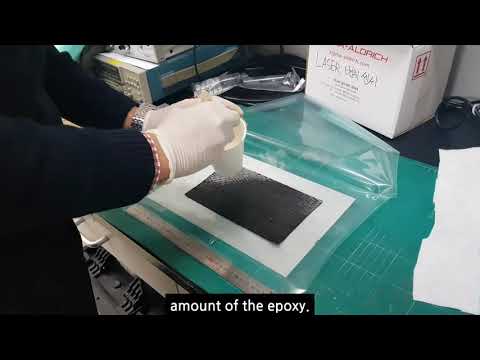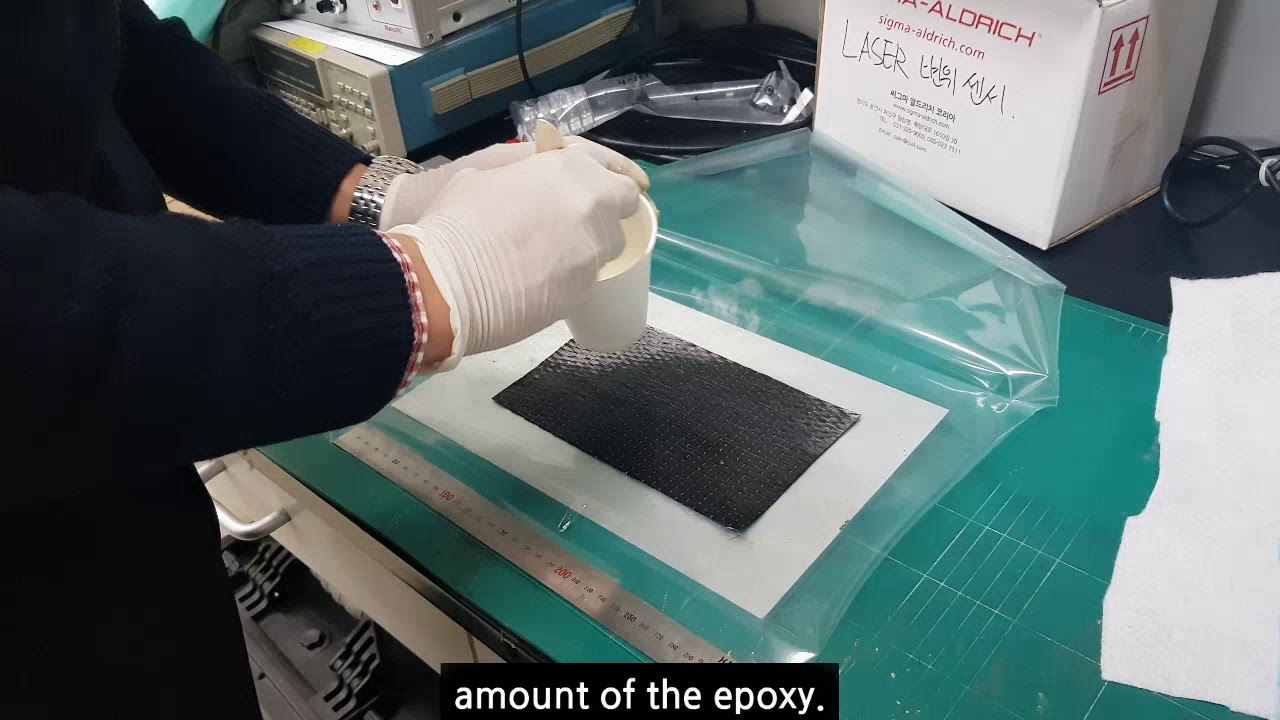Composite fabrication is a fascinating process that combines various materials to create lightweight and durable products. With the use of advanced techniques and cutting-edge technology, composite fabrication offers endless possibilities for innovation in industries such as aerospace, automotive, and construction. The combination of different materials, such as carbon fiber, glass fiber, and resin, allows for the creation of products that possess exceptional strength, flexibility, and resistance to corrosion. Whether it’s manufacturing components for high-performance sports cars or constructing structural elements for skyscrapers, composite fabrication provides a superior alternative to traditional materials. The meticulous attention to detail in the fabrication process ensures that each product is engineered to perfection, meeting the highest standards of quality and performance. From intricate molds and patterns to precise cutting and bonding techniques, every step in the composite fabrication process is carefully executed to produce exceptional end results. Experience the future of manufacturing with composite fabrication and unlock a world of endless possibilities in design, functionality, and performance.

Composite Fabrication: Unleashing the Power of Advanced Materials
Composite fabrication is a cutting-edge manufacturing process that combines two or more materials to create a stronger, lighter, and more durable end product. With applications ranging from aerospace to automotive industries, composite materials have revolutionized the way we design and build structures. In this article, we will explore the fascinating world of composite fabrication and its benefits.
The Basics of Composite Fabrication
Composite fabrication involves the combination of different materials, such as carbon fibers, fiberglass, or aramid fibers, with a matrix material, usually a polymer resin, to create a composite material. The matrix material binds the reinforcement fibers together, providing strength and stiffness to the final product. The result is a material that possesses the best properties of each component, surpassing the limitations of traditional materials.
Composite fabrication can be achieved through several methods, including hand layup, filament winding, pultrusion, and resin transfer molding, among others. Each technique has its own advantages and is selected based on the desired properties and complexity of the final product.
The Advantages of Composite Materials
Composite materials offer numerous advantages over traditional materials, which have made them increasingly popular in various industries. Firstly, composites are incredibly lightweight, making them ideal for applications where weight reduction is critical, such as in aerospace and automotive industries. Additionally, composites have exceptional strength-to-weight ratios, providing superior strength while maintaining a lightweight structure.
Moreover, composite materials exhibit excellent corrosion and chemical resistance, outperforming traditional materials like steel or aluminum in harsh environments. This resistance to corrosion ensures the longevity and durability of composite structures, reducing maintenance costs over time.
Furthermore, composites can be tailored to meet specific design requirements. By varying the type and orientation of the reinforcement fibers, manufacturers can control the mechanical properties of the final product. This versatility allows for the creation of complex shapes and structures, providing designers with unlimited possibilities.
The Applications of Composite Fabrication
Composite fabrication has found its way into numerous industries, transforming the way we build and design structures. One of the most prominent applications is in the aerospace industry, where composites are used extensively in aircraft manufacturing. The lightweight nature of composites contributes to fuel efficiency, reducing operating costs for airlines.
The automotive industry is also benefiting from composite fabrication. Composite materials are used to manufacture lightweight body panels, reducing vehicle weight and improving fuel economy. Additionally, composites offer excellent crash energy absorption capabilities, enhancing passenger safety.
Another industry that heavily relies on composite fabrication is the renewable energy sector. Wind turbine blades, for example, are often made from composite materials due to their high strength and flexibility. The use of composites in this industry enables the production of larger and more efficient wind turbines.
The Future of Composite Fabrication
Composite fabrication is a rapidly evolving field, with continuous advancements in materials, manufacturing techniques, and design capabilities. As technology progresses, we can expect to see even greater adoption of composites in various industries.
Researchers are constantly exploring new reinforcement materials and matrix resins to further enhance the properties of composites. Additionally, advancements in manufacturing processes, such as automated layup and 3D printing, will enable faster and more cost-effective production of composite structures.
The future of composite fabrication is also focused on sustainability. Efforts are being made to develop bio-based resins and recyclable composites, reducing the environmental impact of composite manufacturing.
Conclusion
Composite fabrication has revolutionized the way we design and build structures, offering unparalleled strength, lightweight properties, and durability. With applications ranging from aerospace to automotive industries, composites have become an integral part of modern manufacturing.
As technology and research continue to advance, we can expect even greater innovation in the field of composite fabrication. The future holds exciting possibilities for this remarkable manufacturing process, paving the way for a stronger, lighter, and more sustainable world.
Title: Mastering the Art of Composite Fabrication: A Brief Tutorial
Video Source : IDIM Tutorial Videos
Composite Fabrication
Composite Fabrication
| Process | Description | Advantages |
|---|---|---|
| Hand Lay-Up | The hand lay-up process involves manually placing layers of reinforcing fibers onto a mold and saturating them with resin. It is a popular method for producing simple composite parts with low tooling costs. | Simple and cost-effective, ideal for small-scale production, allows for easy customization of parts. |
| Resin Transfer Molding (RTM) | RTM is a closed-mold process where dry fibers are placed into a closed mold, and a liquid resin is injected under pressure. This method ensures consistent fiber distribution and produces high-quality, void-free composite parts. | Excellent control over fiber orientation, high strength-to-weight ratio, ideal for complex shapes and large-scale production. |
| Autoclave | The autoclave process involves placing pre-impregnated composite materials into a vacuum-sealed bag and subjecting them to high temperature and pressure in an autoclave. This method ensures proper consolidation and curing of the composite, resulting in superior mechanical properties. | Exceptional strength and stiffness, excellent surface finish, suitable for aerospace applications, precise control over part dimensions. |
| Pultrusion | Pultrusion is a continuous process where reinforcing fibers are pulled through a resin bath, then into a heated die to cure the composite. This method allows for the production of long, constant cross-section profiles with high fiber volume fractions. | Highly efficient process, excellent strength and stiffness, low material waste, ideal for producing rods, tubes, and structural shapes. |
In the field of composite fabrication, various processes are employed to create high-performance composite parts. Each process offers unique advantages and is suitable for different applications.
Hand lay-up is a widely used method, particularly for low-volume production. It allows for easy customization of parts and offers cost-effective solutions. By manually placing layers of reinforcing fibers onto a mold and saturating them with resin, simple composite parts can be produced efficiently.
Resin Transfer Molding (RTM) is an advanced closed-mold process that ensures consistent fiber distribution and produces high-quality, void-free composite parts. With excellent control over fiber orientation, RTM offers a high strength-to-weight ratio and is suitable for complex shapes and large-scale production.
The autoclave process is indispensable in the aerospace industry, where exceptional strength, stiffness, and precise control over part dimensions are crucial. By subjecting pre-impregnated composite materials to high temperature and pressure in an autoclave, proper consolidation and curing of the composite are achieved, resulting in superior mechanical properties.
Pultrusion, on the other hand, is a continuous process that enables the production of long, constant cross-section profiles with high fiber volume fractions. The reinforcing fibers are pulled through a resin bath and then into a heated die to cure the composite. This highly efficient process yields excellent strength, stiffness, and low material waste, making it ideal for producing rods, tubes, and structural shapes.
Each of these composite fabrication processes offers distinct advantages, allowing manufacturers to choose the most suitable method based on their specific requirements and desired outcomes.

